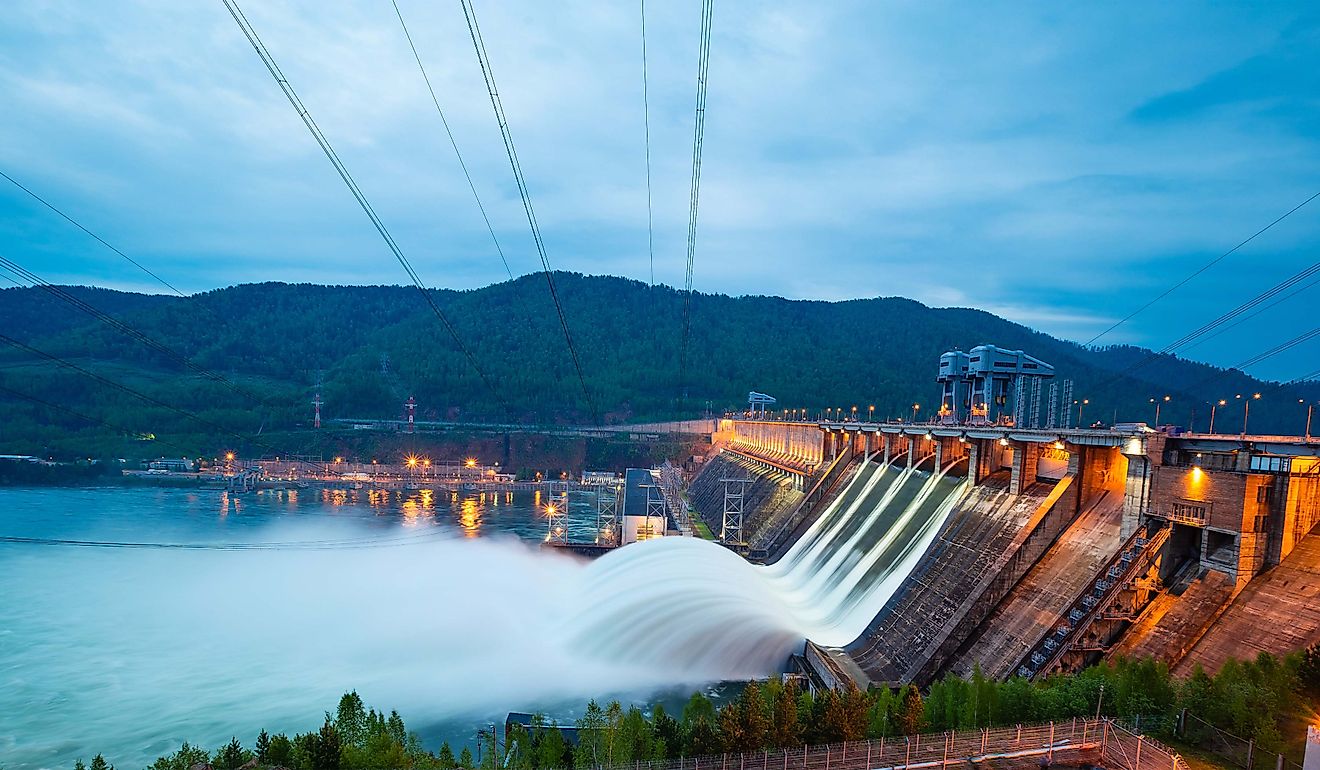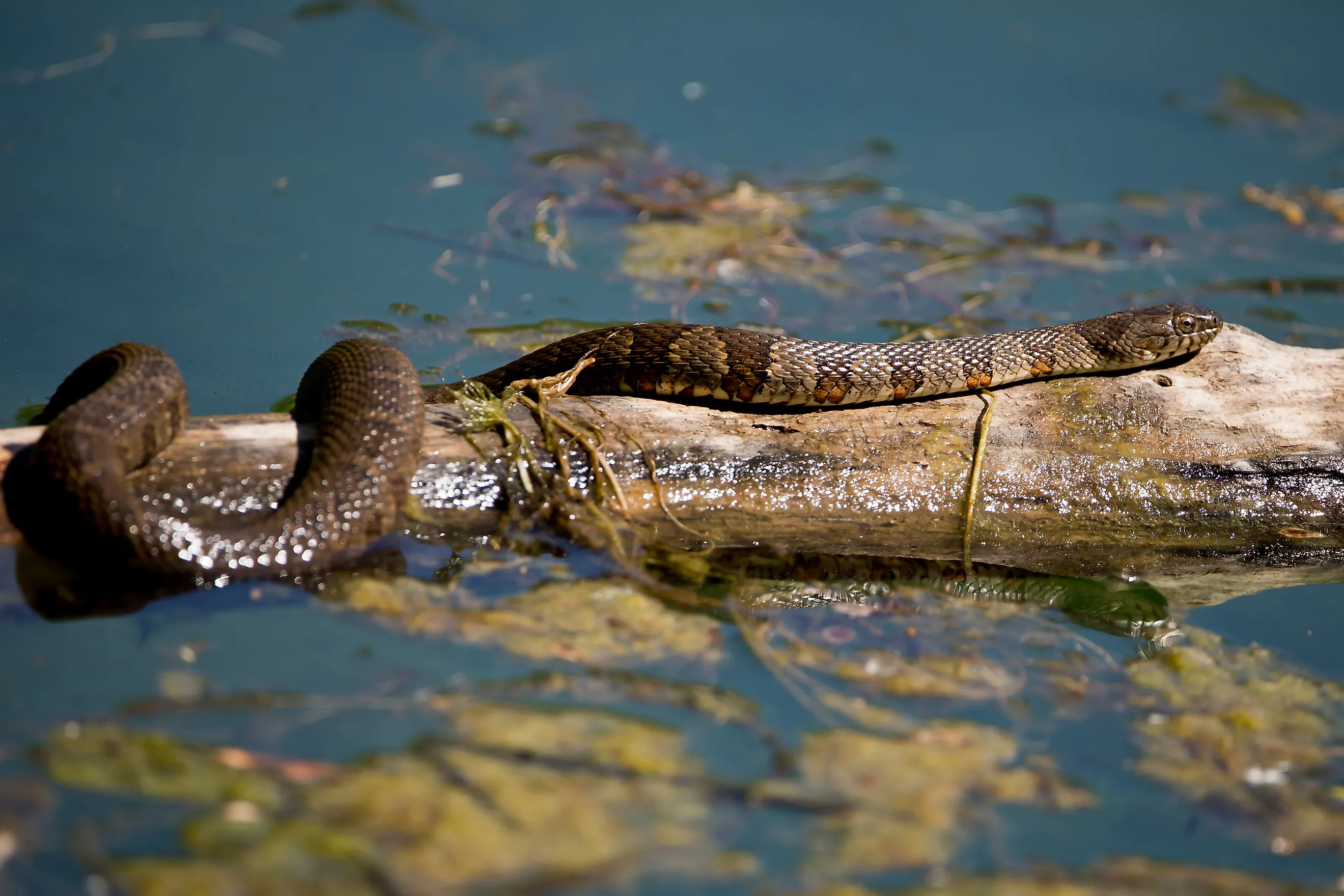
5 Most Snake-Filled Bodies Of Water In Georgia
Georgia’s humid, subtropical climate and diverse landscape make it the ideal habitat for many reptiles, so it’s no surprise that the Peach State has among the highest biodiversity of snakes in the United States. There are 47 snake species in Georgia, seven of which are venomous, and two of which are listed as threatened. The list includes several varieties of water snakes, swamp snakes, and others that enjoy aquatic habitats in Georgia’s lakes, wetlands, rivers, and ponds. If you’re planning on taking a trip into the Georgia countryside for some water recreation, keep an eye out to see who you’re sharing space with. You might just catch a glimpse of some reptile residents relaxing on the riverbank or lazing by the lakeshore of these snake-filled bodies of water.
Lake Hartwell

Lake Hartwell, in northern Georgia near the South Carolina border, is a 55,590-acre reservoir popular with campers, hikers, and boaters. It’s also a busy fishing spot, well stocked with largemouth bass, hybrid bass, striper, black crappie, bream, rainbow trout, and wall-eyed pike.
Fish aren’t the only things making a home in Lake Hartwell, however. The lake is also a thriving habitat, and many different species are sighted here. Venomous ones found at Lake Hartwell are copperheads, timber rattlesnakes, and pygmy rattlesnakes.
Non-venomous species in the area include northern, brown, and redbellied water snakes, as well as the queen snake. If you see one while visiting the lake, it’s most likely to be a northern water snake, which is by far the most common. These can be up to five feet long and range from reddish brown to black with dark spots on their back and sides. Often confused with venomous water moccasins, the northern water snake is harmless and will avoid humans as much as possible.
Chattahoochee River
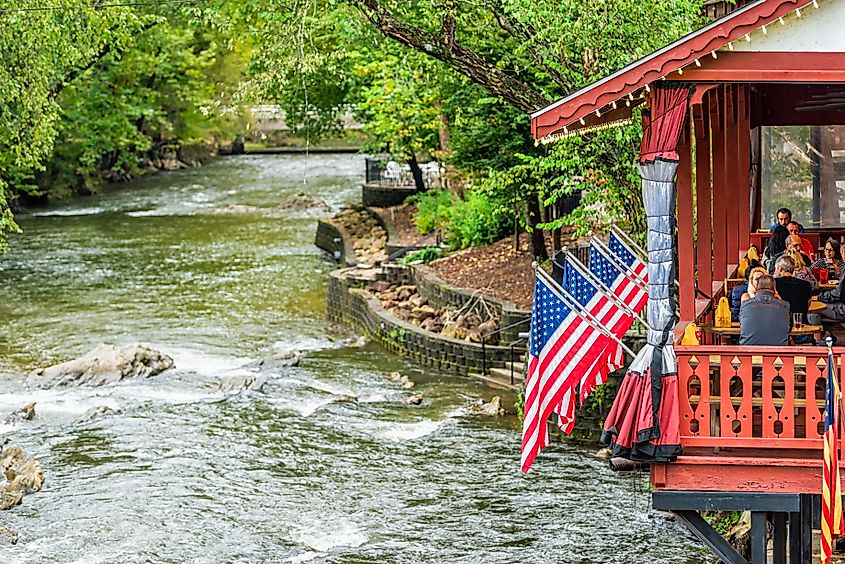
The Chattahoochee River basin covers a huge area from the southern Appalachian Mountains down to the Georgia-Florida border. It’s also one of the most beautiful and ecologically rich areas in the state and a popular spot for outdoor enthusiasts. The Chattahoochee River Recreation Area, which covers 48 miles of the river, is home to over 40 reptile species, many of which are snakes. In this thriving ecosystem, there have been documented sightings of ringneck snakes, northern water snakes, copperheads, rat snakes, and others.
Another popular destination on the river is Chattahoochee Bend State Park, which includes five miles of riverfrontage and offers paddling, kayaking, camping, and hiking. If you’re walking the wooded trails, watch out for timber rattlesnakes, which enjoy waterside wooded habitats and often conceal themselves under forest floor debris.
Lake Sinclair
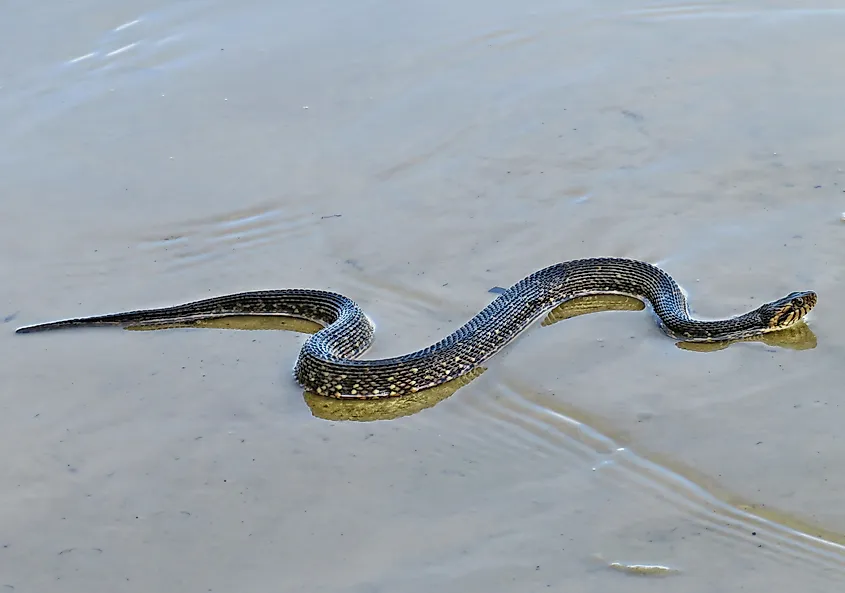
Two hours southeast of Atlanta is Lake Sinclair, a 15,300-acre man-made reservoir in central Georgia. With over 400 miles of stunning shoreline, the lake is busy with boaters, anglers, and visitors all year-round.
The most common species you’re likely to encounter at Lake Sinclair are rat snakes and northern water snakes, neither of which is venomous. The area is home to the venomous water moccasin, also known as a cottonmouth, but sightings here are rare. Water moccasins are often confused with northern water snakes, but there are some telltale differences. When swimming, moccasins hold their heads above the water and appear to glide along the surface, unlike water snakes, which prefer to swim under the water. When threatened, moccasins will open their jaws wide to display their puffy white gums. This aggressive stance is how they came to be known as cottonmouths.
Ogeechee River
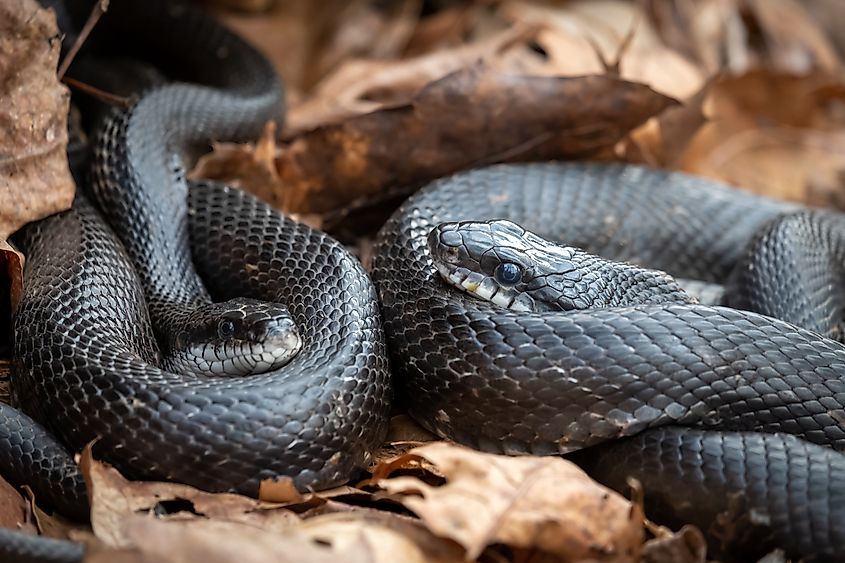
The fourth-longest river in Georgia, the Ogeechee, is a dynamic 250-mile waterway that runs south of Savannah and through Fort McAllister State Historic Park, where three of Georgia’s four rat snake species are commonly found. These powerful constrictors kill their prey by suffocating it and can grow up to 7 feet long with thick, dark bodies.
The Ogeechee River is also home to one of Georgia’s most elusive residents, the rainbow snake. These striking serpents are aquatic and nocturnal, preferring to hide away during the day and hunt at night. Also known as eel moccasins, they have beautiful rainbow-like coloring with red stripes, pink bellies, and yellow markings on their head and sides.
Lake Allatoona
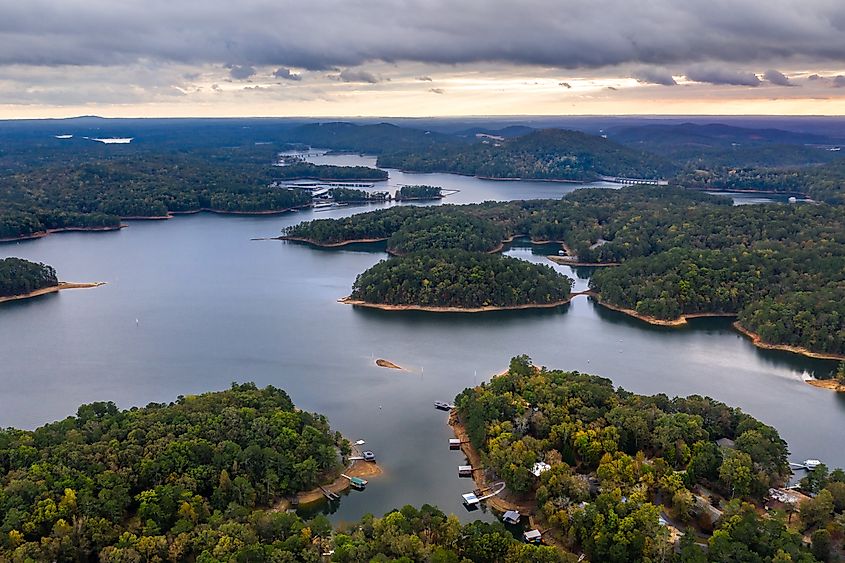
Lake Allatoona, a scenic man-made reservoir with 270 miles of shoreline in north Georgia, welcomes almost 7 million visitors a year. The Lake Allatoona Visitors Centre has exhibits and displays on the lake's history, settlement in the region, and the area’s rich ecology.
Wildlife at the lake includes several snake species, including DeKay’s brown snake, eastern garter snake, grey rat snake, ringneck snake, and eastern hognose snake. The latter has some interesting defensive moves. When threatened, the eastern hognose snake will suck in air, inflate its neck like a cobra, and hiss. If that fails to deter the would-be predator, the snake will then play dead by rolling over and staying motionless. You can identify eastern hognose snakes from their upturned snouts, which give them their name.
Getting to Know Georgia’s Snakes
If you see a snake while enjoying Georgia’s beautiful lakes, rivers, or parks, don’t panic. Simply give it space so it can move away from you without feeling threatened. Georgia’s snakes are protected by state law. Never attempt to handle or otherwise disturb a snake, even if it appears dead. Some species play possum as a defensive tactic, and venomous species often retain venom in their bite after they die.
An essential contributor to Georgia’s ecosystems, snakes are fascinating creatures with an undeserved bad reputation. They may seem intimidating, but most snakes simply want to avoid humans and will try to stay out of your way, tucked under logs, rocks, or other natural debris. With a common sense approach and respect for local wildlife, Georgia’s human inhabitants and snakes can happily coexist and both enjoy the state’s idyllic outdoors.







